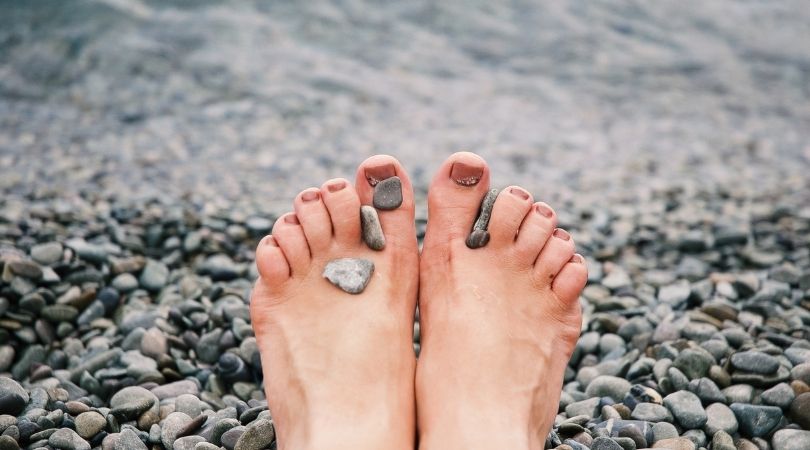Our feet have a big job to do. They support us all day as we walk, run, jump and climb our way through whatever we choose to do in life. They also have to put up with us cramming them into shoes that may not be the best fit.

After all of that, we still expect them to look good whenever we slide off our shoes. It is a big ask, but there are some easy ways that you can keep your feet strong, healthy and beautiful. Check them out:
- Wash your feet every day.
- Don’t forget your feet in your weekly program of care. Let your feet have a bath in a special footbath – water temperature 36 to 40 degrees centigrade. Additives like extracts from dwarf pine, spruce needles and camomile have a pleasant effect on the skin. (Diabetics and people with arteriosclerosis have to ask their doctor).
- Then dry yourself very carefully, especially between the toes, so that the skin does not swell and becomes a haven for bacteria and mycosis.
- Pare your foot nails carefully after the bath (then they are softer). Avoid even small injuries. Pare or file your foot nails straight, pare them only to the edge of the toes. The safest is a good file.
- Use only high-quality stainless steel tools. For reasons of hygiene everybody in the family ought to have his/her own utensils such as a file and nail scissors.
- Stimulate the circulation, but not only with cold water. Slip off your shoes now and then and do little gymnastics with your feet. Sway for example with the edges of the feet or let them revolve. Massage your feet beginning from the tip of your toes in the direction of your heart. You put one foot over the other leg in order to easily reach the sole of the foot with both hands. Now massage with gentle pressure. You will be surprised at the relaxing and pleasant effect. Sit down on a chair and try to roll a tennis ball with the sole of your feet or try to get a handkerchief or a pencil with the toes off the ground. With these exercises, your feet will be better supplied with oxygen and waste products are discharged at the same time.
- Wear comfortable shoes if possible without heels preferably consisting of leather or another breathable material. Tight shoes, which do not fit, often cause annoying and painful bruises, blisters and calluses. Pay attention to your socks. They have to fit close without being pleated but not skin tight. Wool and cotton are the recommended material for socks. And change your socks every day. If possible, vary the size of the heels several times a day. And if it is not avoidable to wear pointed shoes with heels, then buy these shoes one size larger than you need and fill them with cotton wool. Wear them only for some hours. High heels are the worst for feet on the whole.
- Do your best to allow your feet a lot of “freedom”! Often walk barefoot – for example on meadows or indoors (diabetics have to ask their doctor).
- Blisters, calluses and corns, ingrown nails and tinea pedis have to be treated in the right manner. In case of frequent and serious complaints you have to call on professional (medical) feet care (especially important for diabetics!).
- Do not use other people’s towels or shoes. Do not walk barefoot in public baths and in unfamiliar rooms. In this case it is better to wear slippers.
Your feet do a fantastic job so give them the care they deserve. It is totally possible that your feet can do what you ask of them whilst looking gorgeous.
